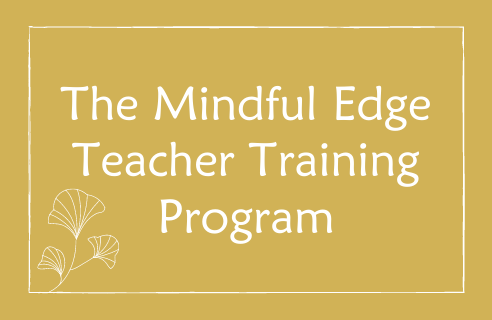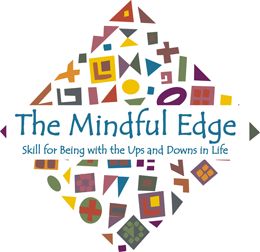The Mindful Edge: Stress Management and Life Strategies for Teens Teacher Certification Program
The Mindful Edge® is a specially-developed program to provide Stress Reduction and Life Strategies for Teens. It is based on the principles of the MBSR Workshop program created by Jon Kabat-Zinn.
The Mindful Edge™ combines the practices of mindfulness with knowledge of brain science, positive psychology, movement and healthy living skills to create a program that benefits teens socially, emotionally, physically and academically.
Students actively participate in the process of unfolding a practical understanding of mindfulness and how it can benefit them in their lives.
Course Description
The Mindful Edge is an evidence-based, trauma-sensitive and social and emotional learning (SEL) informed program comprised of 15 x 1.5-hour sessions, carefully scaffolded and designed to build on the class prior. The program has successfully been implemented in
several high schools in Toronto and York Region in Ontario.
It is based on the principles of the MBSR Workshop program created by Jon Kabat-Zinn. The Mindful Edge™ combines the practices of mindfulness-based stress reduction with knowledge of brain science, positive psychology, movement and healthy living skills to create a program that benefits teens socially, emotionally, physically and
academically.
Who Should Attend
Education professionals including teachers, educational assistants, child and youth workers, social workers, psychologists, occupational therapists, audiologists and speech language pathologists, physiotherapists, student support staff as well as administrators and office staff. The program is also suitable for helping professionals who work with children and teens, including health care professionals, community leaders and staff.
This course is specifically designed for those who have a strong interest in sharing mindfulness with teens in a classroom setting, either in-person or online. It is recommended that teachers interested in implementing this program have some experience with mindfulness.
Delivery Method: Learn One Teach One
Every week, one lesson will be delivered in real time as it would be taught to students (grades 9-12, and can be adapted for 7-8). The participants will then be invited to teach the session to their class / group / individual clients. The following week, there will be an opportunity to debrief on the previous lesson and receive guidance, mentoring and suggestions before moving on to the next lesson.
Overall Program Goals
Through mindfulness practice and discussion, students learn the science of how the brain works and to use simple and accessible tools to:
- Reduce negative impacts of stress
- Support emotional regulation and resilience
- Improve focus and concentration
- Develop the ability to respond thoughtfully, rather than react
- Encourage empathy, compassion and sense of community
- Cultivate healthy relationships with self & others
Mindfulness and the Ontario Curriculum
In addition to being a foundation for the mental health and well-being of all students, The Mindful Edge program can be included in the following curricula:


